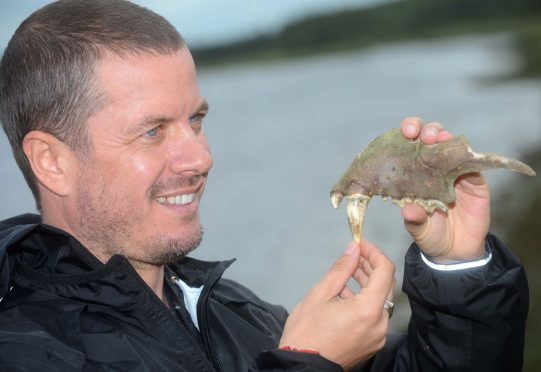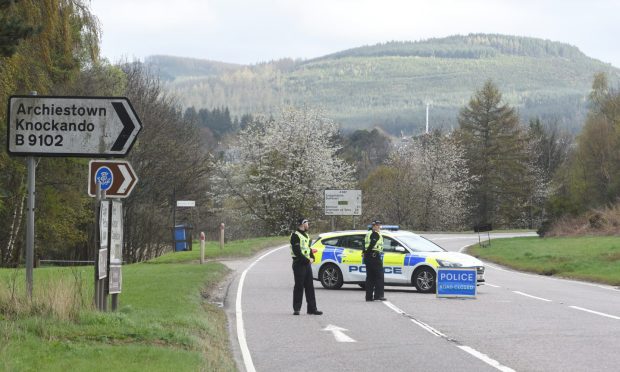Experts believe the huge jaw bone found on the banks of a Moray river may have belonged to a lion.
The massive teeth of the ferocious feline were uncovered by Mal Burkenshaw and Leigh Bagley while kayaking in the River Lossie.
After stopping for a break near Lossiemouth the East Lothian couple discovered the razor-sharp teeth sticking out from the mud.
The find piqued the interest of the duo, who visit the area regularly while visiting Mr Burkenshaw’s family near Fochabers, and they quickly unearthed other bones, suspected to be vertebrae and parts of a leg.
The discovery, which is currently being kept safe in a shoe box, has brought to the surface memories of when a large cat, about the size of a Labrador dog, hissed at fishermen in woods, also near Lossiemouth.
Mr Burkenshaw and Mr Bagley are now trying to have the remains dated so the mystery of its origin can be solved.
Mr Bagley said: “We have no idea how old it is but we’ve done some research and found that people have encountered big cats in the same place.
“It was just sitting there in the mud. You couldn’t help but be fascinated by it.
“Without dating it it’s impossible to know whether it’s from Victorian times or perhaps this was the cat that was on the prowl 10 years ago that those guys saw.”
Last night Danny Bampling, who founded the British Big Cat Society about 20 years ago, explained it would prove difficult to identify the species from just the jaw – but suspected it could be from a lion or leopard.
The Plymouth-based expert has already contacted others to put together the clues to determine where it came from.
He said: “It’s certainly a very intriguing find, particularly because of where it was found.
“We could be looking at a case of Victorian fly tipping – back when skulls from big cats were used in rugs. It might be that a well to-do family has simply chucked it out.
“The laws for keeping big cats changed in 1976. Rather than paying for an improved enclosure people took them to rural or remote parts of Britain to dispose of them.
“It’s a very rare find. It’s only the third or fourth that I’ve heard of.”










